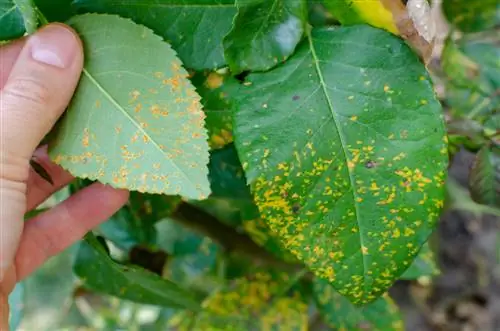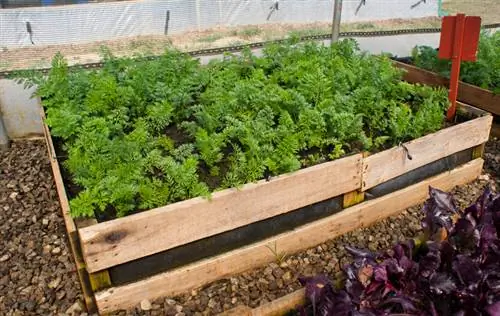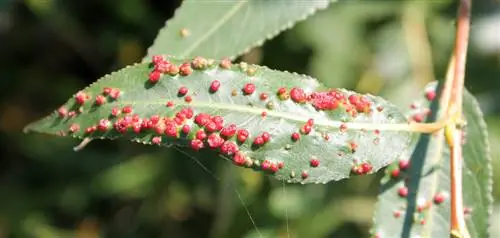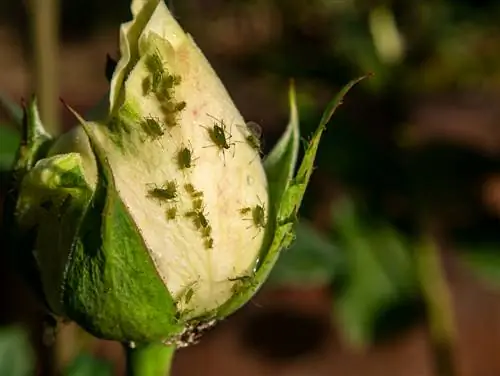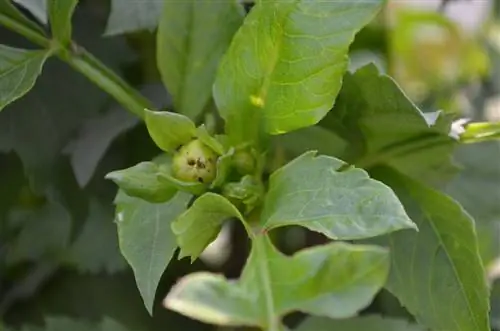- Author admin [email protected].
- Public 2023-12-16 16:46.
- Last modified 2025-01-23 11:20.
If you want to successfully cultivate and perhaps breed roses, you shouldn't resort to poison injection. Choosing the right variety is much more promising. This also applies to one of the most common and feared rose diseases: rose rust.
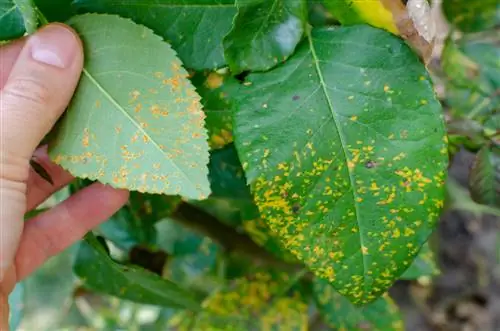
How can you prevent and combat rose rust?
To prevent or combat rose rust, you should choose fungus-resistant varieties, loosen the soil, pay attention to humidity, remove affected leaves and use natural home remedies such as field horsetail broth, comfrey, garlic or tansy broth.
Modern roses are he althier
In recent decades, rose breeding has made great progress in terms of the development of new varieties that are less susceptible to leaf diseases such as sooty mold, powdery mildew or rose rust. Delicate, older varieties come from a time when he alth was not a rose grower's primary goal; Accordingly, they often had to spray their roses with environmentally harmful chemicals. However, these products have long been withdrawn from the market and most breeders are concentrating on developing leafy varieties. However, no rose is completely immune to fungal diseases, although many newer varieties are affected so little that they do not need to be sprayed.
Identifying rose rust
Rose rust mainly occurs in very humid weather. Harbingers of rose rust are small, orange-red, calloused spots that appear on the shoots in spring and cover the entire underside of the leaves with yellow-orange spots in summer. On the underside of the leaves, orange-red and later black pustules appear. Infection with this harmful fungus occurs especially when there is high humidity (e.g. in wet summers or when watering incorrectly), and roses in loamy, compacted soil are particularly at risk. The fungal spores overwinter on the underside of the leaves. These are rusty red and dusty dots.
Prevent and combat rose rust
The most important measure to prevent rose rust is a suitable location. The soil should be well aerated and loose; Soil that is too firm can be loosened by mixing in sand and compost. When watering, you should also make sure that the leaves of the rose are not moistened or can dry quickly after a downpour. For this reason, an airy but not drafty location is recommended for roses. You should collect and dispose of affected leaves immediately in summer; Leaves that have fallen in winter should be raked away.
Home remedies for rose rust
You can also spray infected roses with horsetail broth that is easy to make yourself and thus disinfect them. In addition to field horsetail, comfrey, garlic or tansy broth are also suitable. Spray this approximately every two weeks when the leaves begin to emerge.
Tip
When buying, pay particular attention to the so-called ADR varieties; these are tested, particularly fungus-resistant roses.

